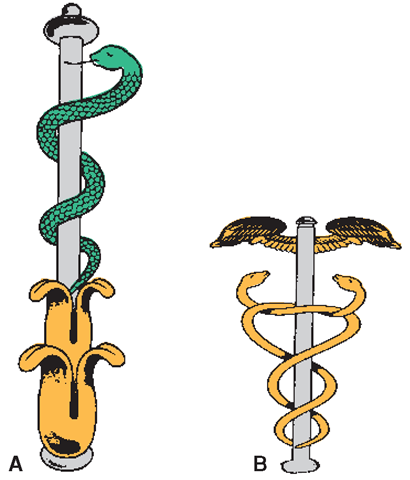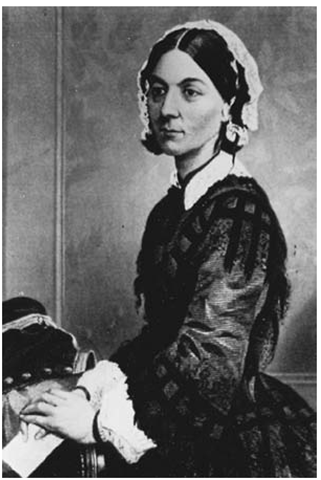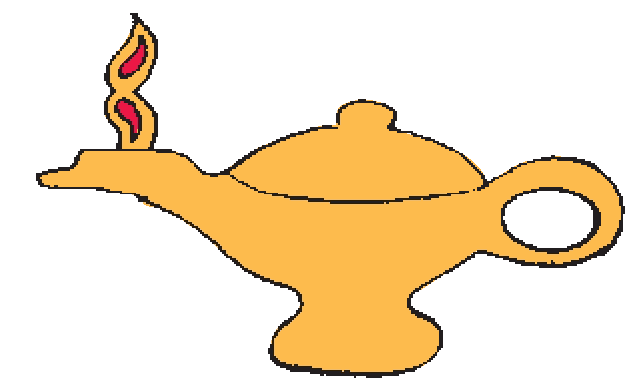Learning Objectives
1. Explain how certain events in ancient and medieval times influenced the development of contemporary nursing.
2. Discuss Florence Nightingale’s influence on modern nursing practice.
3. List at least 10 of Florence Nightingale’s nursing principles that are still practiced today.
4. Identify important individuals who contributed to the development of nursing in the United States.
5. Name some pioneer nursing schools in the United States.
6. List important milestones in the history of practical nursing education.
7. Explain war-related developments in nursing.
8. Discuss current trends that are expected to influence the nursing profession in the 21st century.
9. Describe the importance of nursing insignia, uniforms, and the nursing school pin.
IMPORTANT TERMINOLOGY
|
caduceus |
insignia |
|
Hippocratic oath holistic healthcare |
Nightingale lamp |
You have chosen to be a nurse. The word nurse derives from the Latin word meaning to nourish. You are embarking on a career that combines scientific principles, technical skills, and personal compassion. Although people have been performing many nursing skills for centuries, nursing in its present form began to emerge only in the 19th century. Contemporary nursing continues to evolve as society and its healthcare needs and expectations change. Nursing must continue to adapt to meet society’s goals and to provide needed services in the changing world.
Nursing is a practical and noble profession. It provides a stable career in the ever-changing world of healthcare, with plenty of career options.
Individual attributes required to be a nurse include a strong sense of responsibility and the highest standards of integrity. Personal conviction and flexibility are necessary foundations of a nurse. A nurse must be well educated and integrate the art and the science of working with people.
Nurses interact with a vast assortment of individuals, including numerous and varied healthcare personnel who have their own fields of expertise. Many of these healthcare fields were originally included in the broader roles and responsibilities of nursing. For example, the nurse was originally responsible for nutrition and diets. Nurses were also responsible for rehabilitative needs of the persons under their care. The role of the nurse became so important to the healthcare system that the functions of the nurse had to become diverse and specialized to meet fast-growing needs. Many of these duties were broken into specialties that are seen today, such as nutritionist, dietitian, physical therapist, or occupational therapist.
As the role of the nurse has evolved, so has the role of the person receiving care. When the physician was the primary manager or leader of health issues, the individual receiving care was typically called a patient. During the 20th century, the patient became more aware of his or her own health issues. Instead of being a passive participant, the patient became a more knowledgeable consumer of healthcare and, as in other service industries, the consumer became a client of the primary care provider, nurse, and healthcare system. In the 21st century, all of these terms are currently used to describe the individual who receives healthcare.In everyday conversations, the terms patient, client, and/or consumer may be heard.
NURSING’S HERITAGE
A detailed history of nursing is beyond the scope of this topic. All nurses should become familiar with some important people and developments in the history of nursing. Several Internet sites record nursing’s heritage. As your nursing career develops, you will be part of nursing’s ongoing history.
Early Influences
In ancient times, people often attributed illness to punishment for sins or to possession by evil spirits. Most primitive tribes had a medicine man, or shaman, who performed rituals using various plants, herbs, and other materials, to heal the sick. Tribal rituals included dances, chants, and special costumes and masks. Some groups used human or animal sacrifices. Women had various roles in ancient health practices, depending on the culture and social customs. Women were often involved with assisting in childbirth.
Care of the sick is discussed in the Bible, the Talmud, and other ancient texts. Centers in India and Babylonia provided care for the sick before the time of Christ. By 500 bc, the advanced Greek civilization had begun to acknowledge causes of disease other than punishment by God or demonic possession. Based on mythical figures, the caduceus and the staff of Aesculapius are the modern symbols of medicine (Fig. 1-1). The Greeks began to establish centers, sometimes called hostels or hospitals, for care of the sick and injured. They used warm and mineral baths, massage, and other forms of therapy that priestesses sometimes administered. Pregnant women or people with an incurable illness were not admitted to these hostels.
The Influence of Hippocrates
One of the early outstanding figures in medicine was Hippocrates, born in 460 bc on the Greek island of Kos. Hippocrates is the acknowledged “Father of Medicine.” Hippocrates denounced the idea of mystical influence on disease. He was also the first person to propose concepts such as physical assessment, medical ethics, client-centered care, and systematic observation and reporting. By emphasizing the importance of caring for the whole person (holistic healthcare), he helped to lay the groundwork for nursing and medicine. Contemporary healthcare practitioners preserve the principles of Hippocrates. Typically, a physician will repeat the Hippocratic oath when graduating from a school of medicine. The Florence Nightingale pledge and Practical Nurses’ pledge are based on this oath.
FIGURE 1-1 · Symbols of medicine. (A) Aesculapius, a mythical Greek god of healing and son of Apollo, had many followers who used massage and exercise to treat patients. This god is also believed to have used the magical powers of a yellow, nonpoisonous serpent to lick the wounds of surgical patients. Aesculapius was often pictured holding the serpent wrapped around his staff or wand; this staff is a symbol of medicine. (B) Another medical symbol is the caduceus, the staff of the Roman god Mercury, shown as a winged staff with two serpents wrapped around it.
Early medical educators helped to solidify the need for practitioners to be well-educated individuals. Physicians were eventually required to obtain a university degree as a doctor of medicine (MD). Specialized healthcare education and training became standard as scientific knowledge increased. Modern medicine has multiple medical and surgical specializations; for instance, the client can be described as having heart and lung diseases, or injury and trauma.
Relatively unchanged from the beginning is the concept that a nurse must be aware of the whole client. The holistic approach translates into the nurse’s attentiveness to a client’s personal needs from various perspectives. The nurse is aware of the client’s emotions, lifestyles, physical changes, spiritual needs, and individual challenges. Nursing is unique in this approach to healthcare.
NCLEX Alert NCLEX questions are based on the contents of the official NCLEX-PN Test Plan which is found.Students need to be aware of these general categories because specific questions, better referred to as clinical scenarios, can involve one or more components of the Plan. The answers provided by NCLEX are referred to as options.
The Roman Matrons
The first recorded history of nursing begins with Biblical women who cared for the sick and injured. Many were in the religious life. For instance, Phoebe, mentioned in the Epistle to the Romans (about 58 ad), is known as the first deaconess and visiting nurse.
Fabiola, a Roman woman, is credited with influencing and paying for the construction of the first free hospital in Rome in 390 ad. Another Roman woman, Saint Marcella, converted her beautiful home into a monastery, where she taught nursing skills. She is considered the first nursing educator. Saint Paula is credited with establishing inns and hospitals to care for pilgrims traveling to Jerusalem. She is said to be the first person to teach the philosophy that nursing is an art rather than a service. Saint Helena, the mother of the Roman Emperor Constantine, is credited with establishing the first gerontologic facility, or home for the aged.
Monastic and Military Nursing Orders
Beginning in the first century, several monastic orders were established to care for the sick. Sometimes, the monastery itself became the refuge for the sick; in other cases, members of a religious order founded a hospital. Both men and women of religious orders performed nursing care.
During the Crusades (1096-1291), female religious orders in northern Europe were nearly eliminated. Male military personnel, such as the Knights Hospitalers of St. John in Jerusalem, conducted most nursing care. Because these military men were required to defend the hospital as well as care for the sick, they wore suits of armor under their religious habits. The symbol for this order was the Maltese Cross, which later became the symbol of the Nightingale School. This symbol was the forerunner of nursing school pins worn today.
The Reformation
In the 1500s, during the European religious movement called the Reformation, many monasteries closed and the work of women in religious orders nearly ended. Until the 1800s, the few women who cared for the sick were prisoners or prostitutes. Nursing was considered the most menial of all tasks, and the least desirable. This period is called the dark ages of nursing.
Fliedner in Kaiserswerth
In 1836, Pastor Theodor Fliedner established the Kaiserswerth School for Nursing in his parish in Kaiserswerth, Germany. It was one of the first formally established schools of nursing in the world. Out of it grew the Lutheran Order of Deaconesses, which Fliedner directed. Its most famous student was Florence Nightingale.
By the late 1800s, many schools for trained nurses existed throughout Europe. The status of nursing began to improve, and many women, including members of religious orders, once again became involved in nursing care.
Florence Nightingale
Even during the days when nursing was considered menial and undesirable, some women continued to care for the sick. Probably the most famous was Florence Nightingale (Fig. 1-2). Most nurses before her time received almost no training.
FIGURE 1-2 · Florence Nightingale. (Photo courtesy of the Center for the Study of the History of Nursing.) The Florence Nightingale Museum in London, England, has multiple pictures and historical collections of this legendary woman and her contemporaries.
Not until she graduated from Kaiserswerth and began to teach her concepts did nursing become a respected profession.
Nightingale was born in Italy in 1820 to wealthy English parents. When she was still very young, her parents returned to England. In 1844, an American doctor visited the family, and Nightingale asked him if entering the field of nursing would be appropriate for her. The reply from Dr. Samuel Gridley Howe has become a classic quotation. He said:
My dear Miss Florence, it would be unusual (for you to enter nursing), and in England whatever is unusual is apt to be thought unsuitable; but I say to you, go forward, if you have a vocation for that way of life; act up to your aspiration and you will find that there is never anything unbecoming or unladylike in doing your duty for the good of others. Choose your path, go on with it, wherever it may lead you, and God be with you!
In 1851, Nightingale entered the Deaconess School in Kaiserswerth. She was 31 years old, and her family and friends were strongly opposed to her becoming a nurse. After her graduation in 1853, she became superintendent of a charity hospital for governesses. She trained her attendants on the job and greatly improved the quality of care. In 1854, the Crimean War began. Nightingale gained fame during this conflict. She entered the battlefield near Scutari, Turkey, with 38 other nurses and cared for the sick and injured. The nurses had few supplies and little outside support. Nonetheless, Nightingale insisted on establishing sanitary conditions and providing quality nursing care, which immediately reduced the mortality rate. Her persistence made her famous, and she and her nurses were greatly admired. Her dedicated service both during the day and at night, when she and her nurses made their rounds carrying oil lamps, created a public image of the lady with the lamp. In time, the Nightingale lamp or the “Lamp of Learning” (Fig. 1-3) became a symbol of nursing and nursing education. Today, many schools of nursing display a model of the lamp or a picture of Florence Nightingale carrying a lamp.
FIGURE 1-3 · The "Nightingale lamp” (also known as the "Lamp of Nursing” or the "Lamp of Learning”) is an insignia of nursing and nursing education. The lamp represents the warmth of caring. The light of the lamp symbolizes the striving for excellence. The oil represents the energy and commitment of the nurse to heal others.
Nightingale’s Definition of Nursing
Nightingale had definite and progressive ideas about nursing. Her definition of nursing, published in 1859, is still important today. She said, “Nature alone cures. Surgery removes the bullet out of the limb, which is an obstruction to cure, but nature heals the wounds . . . Medicine assists nature to remove the obstruction, but does nothing more. And what nursing has to do in either case, is to put the patient in the best condition for nature to act upon him” (Nightingale, 1992).
The Nightingale School
Building on the respect she had established in the Crimean War, Nightingale opened the first nursing school outside a hospital in 1860. The nursing course was 1 year in length and included both classroom and clinical experience, a major innovation at that time. Students gained clinical experience at St. Thomas Hospital in London. Because it was financially independent, the school emphasized learning, rather than service to the hospital. Some principles of the Nightingale School for Nurses are still taught today:
• Cleanliness is vital to recovery.
• The sick person is an individual with individual needs.
• Nursing is an art and a science.
• Nurses should spend their time caring for others, not cleaning.
• Prevention is better than cure.
• The nurse must work as a member of a team.
• The nurse must use discretion but must follow the physician’s orders.
• Self-discipline and self-evaluation are important.
• A good nursing program encourages a nurse’s individual development.
• The nurse should be healthy in mind and body.
• Teaching is part of nursing.
• Nursing is a specialty.
• A nurse does not graduate but continues to learn throughout his or her career.
• Nursing curricula should include both theoretical knowledge and practical experience.
The Nightingale School included other innovations:
• Establishment of a nurses’ residence
• Entrance examinations and academic and personal requirements, including a character reference
• Records of each student’s progress—later known as the “Nightingale plan,” a model for current nursing programs
• Records of employment of students after graduation, or a formal register—the beginnings of nursing practice standards.
NCLEX Alert When taking the NCLEX, read the clinical scenario carefully and read all of the options. Keep in mind that more than one option may be correct. You must choose the BEST correct option (answer).



